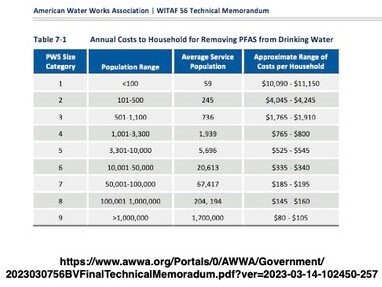


The framers of our Constitution understood that governmental power can be misused for partisan purposes. Therefore, they carefully designed a national government of limited powers, with separation of powers, and checks and balances. Unfortunately, later generations gradually removed most of the safeguards they had painstakingly built into our constitution: As I’ve written in TAS previously, “When government grows that big and powerful, politicians will find a way to warp power for their own ends.” (READ MORE from E. Donald Elliott: It Should Be Illegal for Politicians to Buy Votes With Our Money)
Joe Biden and Co. have perfected techniques for using the expanded powers of the modern Administrative State to funnel money to their political supporters. First, Biden mandated by Executive Order that “at least” 40 percent of the $329 billion supposedly meant to fight climate change was to be directed to “disadvantaged communities” populated by racial minorities that voted overwhelmingly for Biden in the last election.
Next Biden tried to “forgive” $430 billion in student loan debt, a blatantly illegal move that was eventually set aside by the Supreme Court — but the political damage had been done. Democrats got a double benefit with younger voters in the runup to the 2022 elections: they got credit for trying to give younger voters a $430 billion payoff, but then those nasty Republicans on the Supreme Court took away their gift.
Let’s hope that OIRA, the Congress, or the courts … see this for what it is — a big payoff to the plaintiffs’ trial lawyers at your expense.
Now comes Election Payoffs Part Three, which dwarfs the previous two: Biden and Co. are now trying to weaponize the enormous regulatory power of the Environmental Protection Agency (EPA), an agency for which I once served as General Counsel, in order to shovel billions of dollars in contingent fees to the plaintiffs’ trial lawyers. Such plaintiffs’ lawyers are big contributors to political campaigns with 99 percent of their contributions going to Democrats according to one study.
Here’s how the latest scam to use your money to buy Biden’s re-election works. The EPA proposed a rule to regulate extremely low levels of “per- and polyfluoroalkyl substances” (PFAS), a large class of chemicals used in a variety of consumer products. If adopted, the EPA’s proposed new rule would limit the levels of certain PFAS compounds in drinking water down to the unimaginably low level of 4 parts per trillion — which is equivalent to just four grains of sand in an Olympic size swimming pool. Meanwhile, the EPA quietly removed several PFAS compounds from its “Safer Choice” list of recommended ingredients for consumer products. (READ MORE: The Left Does Not Believe in the Rule of Law)
If adopted, the EPA’s proposed rule for PFAS in drinking water may be the most expensive rule in the EPA’s history. The direct cost to water utilities to comply is estimated by the EPA at “only” about $1 billion per year, but the American Water Works Association (AWWA) says it would actually cost $3.8 billion per year. How much this will cost the average American family varies from a high of about $10,000 extra per year to a low of about $100 per year depending upon the size of their water supply system, as shown in the chart below from an analysis by the distinguished engineering consulting firm Black & Veatch for AWWA:
However, the direct costs to comply are only a small part of the total costs of the proposed rule. A much bigger expense is that “the maximum contaminant levels that the EPA sets [for drinking water] will become target cleanup levels at Superfund sites and de facto cleanup levels at other sites.” (This results from an arcane aspect of Superfund law called the ARAR principle, which is explained here.)
The lower courts have turned that casual one-liner into a legal doctrine that requires judges to give “super-deference” to agency judgments.
This one-two gut punch is likely to push several major U.S. chemical companies essential to our national defense into bankruptcy. Think I am exaggerating? One company, 3M, has already reached a settlement for $10 billion (yes, with a B) to settle only part of its PFAS liability. Time magazine says that was “just the tip of the iceberg” with plenty more to come. PFAS lawsuits will be a bonanza for plaintiffs’ lawyers, who typically take 20–33 percent of recoveries as their contingent fees.
This multi-billion-dollar wealth transfer might be defensible if eliminating low levels of PFAS from drinking water really would save thousands of lives, but not a single study cited by the EPA actually shows any harm to human health from exposure to low levels of PFAS, including exposures to PFAS many times higher than the EPA’s proposed 4 part per trillion limit. Rather, the EPA relies on a few studies that show no toxic effects but only “subclinical effects,” which are measurable changes in bodily functions within the range otherwise considered normal. (I am not a scientist, so I have checked with three Ph.D. toxicologists who all confirmed that my understanding is correct.) (READ MORE: The Worst Supreme Court Decision in History)
The EPA’s proposed new rule for the U.S. would be hundreds of times more stringent than what most other countries worldwide consider a safe level. That’s not industry propaganda but the conclusion of an international collaboration of independent scientists that recently won the prize as the best scientific paper of the year from a section of the prestigious Society of Toxicology.

Slide from January 22, 2024 Shubik Lecture to the Toxicology Forum by Dennis Paustenbach Ph.D, DABT, FATS.
Even the EPA’s own very slanted analysis of costs and benefits shows that the alleged benefits barely exceed the EPA’s greatly understated estimates of costs. Those costs will be paid for by everyone who drinks water, including you. The burdens are particularly crushing for smaller water systems and low-income areas. Tables 7-1 and 9-13 buried in the EPA’s 374-page economic analysis shows that the costs for these areas will exceed the benefits, even assuming the EPA’s exaggerated estimate of benefits.
Getting bored by the technical details? Keep reading; the proponents of this huge waste of your money are counting on all the technical gobbledygook to prevent you and the rest of the public from understanding that you are being ripped off big time.
The extremely low levels of risk from PFAS in drinking water and consumer products — if indeed there is any real risk at all — could not be the basis for successful personal injury lawsuits against the PFAS manufacturers and companies because plaintiffs would ordinarily have to prove in court that their alleged injuries are more probable than not to result from exposure to PFAS. So how to magically turn extremely low risks that do not meet the “more probable than not” test into a gravy train for lawyers? Get the EPA to regulate on a very precautionary basis and then sue the manufacturers for the additional costs of compliance.
Think the courts will save us from this regulatory atrocity as they did for student loan forgiveness? Think again. The lower courts have developed a doctrine called Baltimore Gas & Electric deference, after a 1983 case by that same name, in which the Supreme Court made a passing remark that “[w]hen examining this kind of scientific determination [making predictions, within its area of special expertise] at the frontiers of science as opposed to simple findings of fact, a reviewing court must generally be at its most deferential.”
The lower courts have turned that casual one-liner into a legal doctrine that requires judges to give “super-deference” to agency judgments “on the frontiers of science.” I call this “no look judicial review,” and have advocated its abolition in an academic paper, but for now, that pernicious doctrine is still on the books; it gives judges an excuse to save themselves time and trouble by rubber stamping technical judgments like those in the EPA’s PFAS rulemaking.
The only remaining line of the defense against such abuses of regulatory power is the White House Office of Regulatory Affairs (OIRA), now headed by Richard Revesz, former Dean of NYU Law School and an eminent lawyer-economist whose confirmation on a bi-partisan basis I supported publicly. The EPA’s proposed PFAS rule is now undergoing final review at OIRA, and most of the needless expense could be avoided by setting a more reasonable limit, such as in the 20-to-40 parts-per-trillion range, while still fully protecting public health. However, making that change would probably require the EPA to repropose the rule for another round of public comment because that was not one of the options in the EPA’s original proposal, and OIRA is under a lot of pressure to get it out before a May 22 deadline so that it cannot be reconsidered by the next Congress under the Congressional Review Act after the November elections.
Let’s hope that OIRA, the Congress, or the courts come to their senses and see this for what it is — a big payoff to the plaintiffs’ trial lawyers at your expense — with little or no benefit to public health.
Note: The author represents that he has not received any compensation for this article, but he also discloses that the law firm with which he is associated represents multiple parties on all sides of various PFAS-related disputes.

